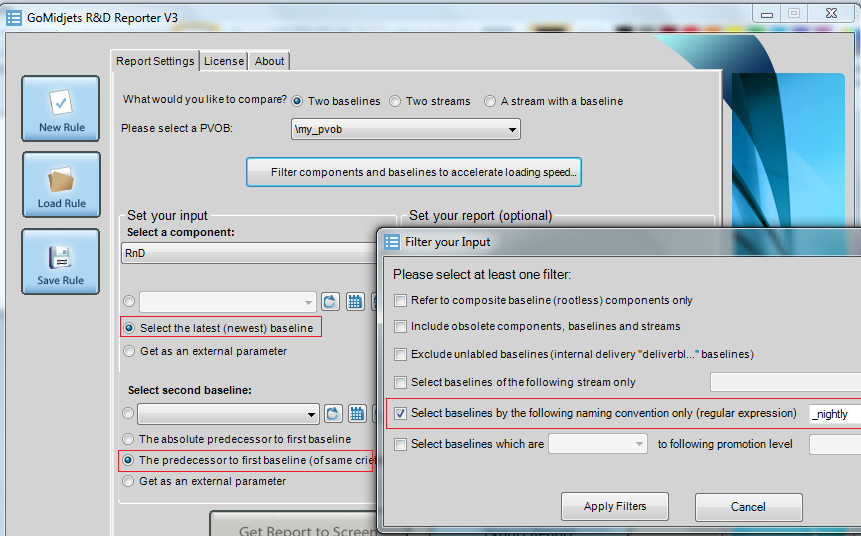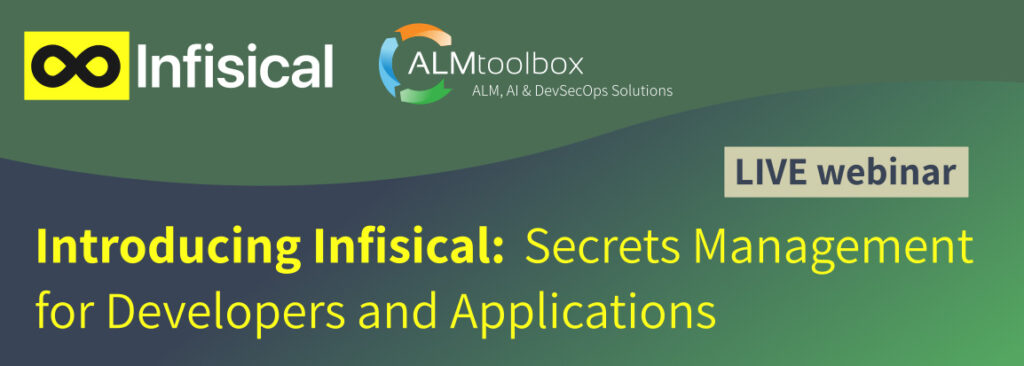We are happy to announce the release of the newest version, which contains many new features and benefits inside, intended for all stakeholders in the development lifecycle: team leaders, development managers, software developers, QA engineers and release managers. We are sure that everyone will find benefits that increase her/his daily tasks.
New features and benefits:
- Group report by name of files (ClearCase elements). New report kind: You can now group the changes by filenames (in addition to the old ‘group by ClearCase activities’ option). Group by filenames enables you to get a precise list of all file elements that were changed based upon the criteria you decide –between baselines, streams or between a stream with a baseline. For each element, you can drill down and get a sub-list of its file versions that were changed or inserted, including their properties – e.g. parent activity, description, username, is it a merge target version, which baselines are involved, etc.

Screenshot: Report is grouped by filenames (in addition to activity names)
Further reading: How do I set a report to be grouped by filenames?
- Export your reports to a new and rich format: “RnD” format. Rather than ‘standard’ formats such as Excel, HTML, PDF etc., this format enables you to launch ClearCase commands from within the report – this is a real RICH report! You can also share this report with your co-workers, manager or colleagues and they can immediately read it and useit. Further advantages included in this new format:
- Performance: you do not have to wait for ClearCase to fetch data from database and build up the report – all the data is already there, ready to go.
- Easy to use: you do not have to configure the query settings in order to get a report. Just double-click on the file like you would open any file on your computer.
- Easy to deploy: This report is opened with the click of a mouse. You can email it to any relevant stakeholder (e.g. team leaders, project manager, R&D manager etc.)
- Rich information – you can view highlighted information (such as charts and baselines) and drill down using context menu to see properties of files, activities, elements etc. You can also see charts.
- Integrated with Visual Annotate
- New filters included, which help you design the report precisely the way you want it.
- Filter out unnecessary streams so you can compare baselines from a certain stream
- Filter out baselines by their promotion levels
- Filter out baselines by a naming convention (regular expressions are supported!)
- Filter out directory elements
- New option to compare baselines: you can select the latest baseline by a given naming convention (supporting regular expressions!) and compare it with the predecessor baselines that are suitable to the same naming convention criteria. For instance – assuming you want to compare the differences between two nightly builds on a certain stream. During the working day many baselines are being created, but only nightly baselines are marked with “_nightly” postfix as part of the name. So you can easily set a rule that compares the latest “_nightly” baselines with the previous “_nightly” baseline and send the results via email or any other report format.
These new filters can help you apply best practices of continuous integration, as they easily identify the baselines which represent builds, and then you can set automatic rules that document the changes each time you launch a build or continuous integration iteration.

Screenshot: filter-out baselines by a given naming convention
- Multi-component support: you can create a report that simultaneously compares baselines from within more than one component, and then export it to CSV format (which can be opened as an Excel sheet).
- Support ClearCase Attributes: you can retrieve date stored on activities’ attributes in ClearCase and generate a CSV report (which can be opened as an Excel sheet). Furthermore, we provide lots of flexibility: you can select up to 20 different attributes; you can set their titles in report and the order they are displayed. Read a case study for an example of how one of our customers, HP, uses this functionality to integrate ClearCase with HP Quality Center by using ClearCase attributes.
- New Email attachments: you can now send the reports as attachment files to any distribution list, inside or outside your organization.
- New formats: export reports to pdf, xml, xls, xslx, text , MHT, RTF (great for MS-Word), image (BMP, Gif, Jpg, PNG)
- New statistics: at the top of the report, you get a changes summary:
- how many unique files (ClearCase elements) have been changed or created
- How many activities have been created or changed
- How many file versions have been created
- How many file versions have been created by a merge operation (including rebase or delivery)

- New charts: charts help you reach informed decisions, identifying trends, bottle-necks and better understanding the code churn.

- Pie charts: activities’ distribution by users; activities’ distribution by streams
- Gantt Chart that illustrates a project schedule: See activities’ start and finish dates
- Stacked bar and area charts: change-sets (file versions) over time by users and streams
- Create a baselines-comparison report by sending baselines as external arguments in run-time. This functionality enables you to integrate the tool more closely with build, delivery or “Continuous Integration” processes.
- New integration with Visual Annotate: You can annotate any file or version directly from the report, and drill down on each code line to know who changed it, when, why, where it came from and how it affects the other versions.
- Better support for Windows 7, 2008 and XP: no more admin privilege are required to install the application.
- Floating licenses are now supported: you can install the application on any Windows host in organization, and consume the licenses from one central repository.
- Improved performance:
- The loading time of baselines list has been reduced.
- Some queries can skip the step of generating baselines list/
- UI (User Interface) and dashboard have been improved:
- Setting up queries and report rules has been made easier.
- Export report to 3rd-party formats is now moved to a separated form.



